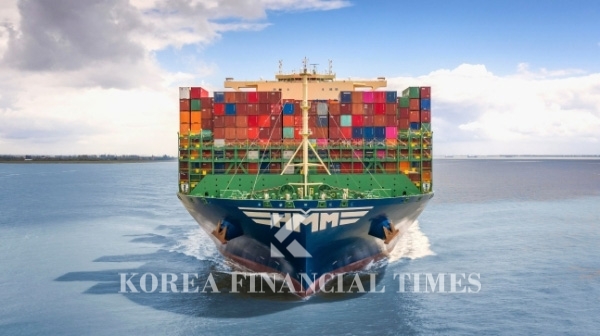HMM reported 2Q revenue of 2.663 trillion won, up 25.0% year-on-year (2.13 trillion won). Operating profit was also strong at KRW 644.4 billion, more than quadrupling from the previous year's KRW 160.2 billion. HMM's net profit also surged to KRW 660.8 billion, more than double the previous year's KRW 312.8 billion. In addition, the company is on track to achieve an operating profit of 2 trillion won for the full year, with revenue of 4.993 trillion won and operating profit of 1.514 trillion won in the first half.
This, coupled with a significant increase in the number of kilometers traveled and delays in shipping schedules, is causing ocean freight rates to soar. In fact, the SCFI, a measure of shipping freight rates, nearly tripled from 984 points in the second quarter of last year to 2,628 points in the second quarter of this year. In June, the index hit 3700 points, its highest level since 2022.
Higher shipping freight rates also contributed to the performance, with shippers signing long-term contracts following spots (short-term contracts). Container revenues accounted for about 83.9% of HMM's H1 revenue, or KRW 4.192 trillion. The Americas accounted for about 38.6% of container revenue, or more than 1 trillion won in total. Many of these routes have long-term contracts that are renewed in April or May.
HMM's continued strong performance has resulted in higher operating margins. The operating margin nearly doubled from 11.1% in the first half of last year to 21.1% in the first half of this year. HMM's total assets increased to KRW 29.589 trillion, up 13.0% from KRW 25.7134 trillion a year earlier. HMM is bringing in ships on a roll. HMM has previously ordered ships since 2022, with a massive cash infusion of KRW 15 trillion.
HMM plans to increase its container fleet from 920,000 TEUs (TEU=20-foot container - 84 ships) to 1.5 million TEUs (130 ships) by 2030. The capacity of bulk carriers such as dry bulk and tankers will also be expanded from 6.3 million DWT (net deadweight tons - 36 vessels) to 12.28 million DWT (110 vessels) in 2030. The plan is to increase market share by strengthening sales to strategic shippers at home and abroad. In addition, in order to participate in the shipping industry's 'Net Zero' goal in 2050, the company is ordering eco-friendly ships and expanding its eco-friendly fuel supply chain.
However, finding a new owner is likely to be difficult as the price tag for HMM has skyrocketed. HMM, formerly Hyundai Merchant Marine, is the eighth-largest shipping line in the world. Its shareholding structure is 30.87% owned by the Korea Development Bank and 30.38% by Korea Maritime Promotion Corporation. Last year, HMM selected Harim Group as the preferred bidder for its sale. However, the deal was canceled after HMM deemed the KRW 6 trillion offered by Harim to be inadequate. The ransom amount would increase to 8 trillion won if the perpetual convertible bonds (CBs) and warrants (BWs) held by KDB and Korea Maritime Promotion Corporation are converted into common shares.
However, HMM's stock price is currently in the low KRW 17000s after reaching a peak of KRW 17000s 50,000 in 2021. Although HMM has rebounded this year, the stock price is underperforming expectations as the geopolitical turbulence surrounding the shipping industry could reoccur in the second half of the year. In this case, the possibility of a sale of HMM increases. HMM is also expected to restructure its alliance in the second half of the year. However, as Harim Group was ultimately unsuccessful in its bid, the sale of HMM is expected to be finalized within the top 10.
Son Wontae (tellme@fntimes.com)
가장 핫한 경제 소식! 한국금융신문의 ‘추천뉴스’를 받아보세요~
데일리 금융경제뉴스 Copyright ⓒ 한국금융신문 & FNTIMES.com
저작권법에 의거 상업적 목적의 무단 전재, 복사, 배포 금지









![[인사] ‘미래차 우려’ 현대차그룹, 해외파 ‘하러’·국내파 ‘정준철’ 투톱 돌파구](https://cfnimage.commutil.kr/phpwas/restmb_setimgmake.php?pp=006&w=284&h=214&m=5&simg=2025121812000503296dd55077bc212411124362.jpg&nmt=18)

![글로벌 1등 보고 달렸는데…LG엔솔, 신용등급 ‘흔들’ [Z-스코어 기업가치 바로 보기]](https://cfnimage.commutil.kr/phpwas/restmb_setimgmake.php?pp=006&w=284&h=214&m=5&simg=2025121422390608986dd55077bc25812315162.jpg&nmt=18)



![류재철 LG전자 CEO "이기는 분야에 집중, 핵심은 속도" [2026 신년사]](https://cfnimage.commutil.kr/phpwas/restmb_setimgmake.php?pp=006&w=284&h=214&m=5&simg=20251223093402073917de3572ddd12517950139.jpg&nmt=18)



![‘반도체 게임체인저’ 유리기판 대전…SKC vs 삼성전기 [대결! 일대다 (下)]](https://cfnimage.commutil.kr/phpwas/restmb_setimgmake.php?pp=006&w=110&h=79&m=5&simg=2025122122545907776dd55077bc2118218214118.jpg&nmt=18)
